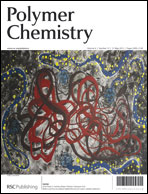A facile and general method to covalently functionalize graphene oxide (GO) with copolymers, using poly(styrene-co-methylmethacrylate) (P(St-co-MMA)) as an example, via miniemulsion polymerization is described in this study. After in situ reduction, insulating GO is converted to conductive reduced-graphene oxide (RGO). P(St-co-MMA) grafted RGO as conducting filler was incorporated into immiscible polystyrene (PS)/poly(methyl methacrylate) (PMMA) blend to prepare conductive polymer composites (CPCs). The lowest percolation threshold (0.02 vol%) among all the reported values for graphene-filled CPCs was achieved due to the controllable preferential distribution of the modified RGO at the interfacial region between PS and PMMA phases, attributed to P(St-co-MMA) grafted on the surface of RGO behaving as compatibilizers to improve interfacial interactions with both the two phases. Moreover, P(St-co-MMA) grafting modified RGO could obviously enhance the compatibility reflected by a significant reduction of the size of dispersed phase, for an example, by nearly one order of magnitude for PS/PMMA (4/1 in volume) blends.

You have access to this article
 Please wait while we load your content...
Something went wrong. Try again?
Please wait while we load your content...
Something went wrong. Try again?


 Please wait while we load your content...
Please wait while we load your content...